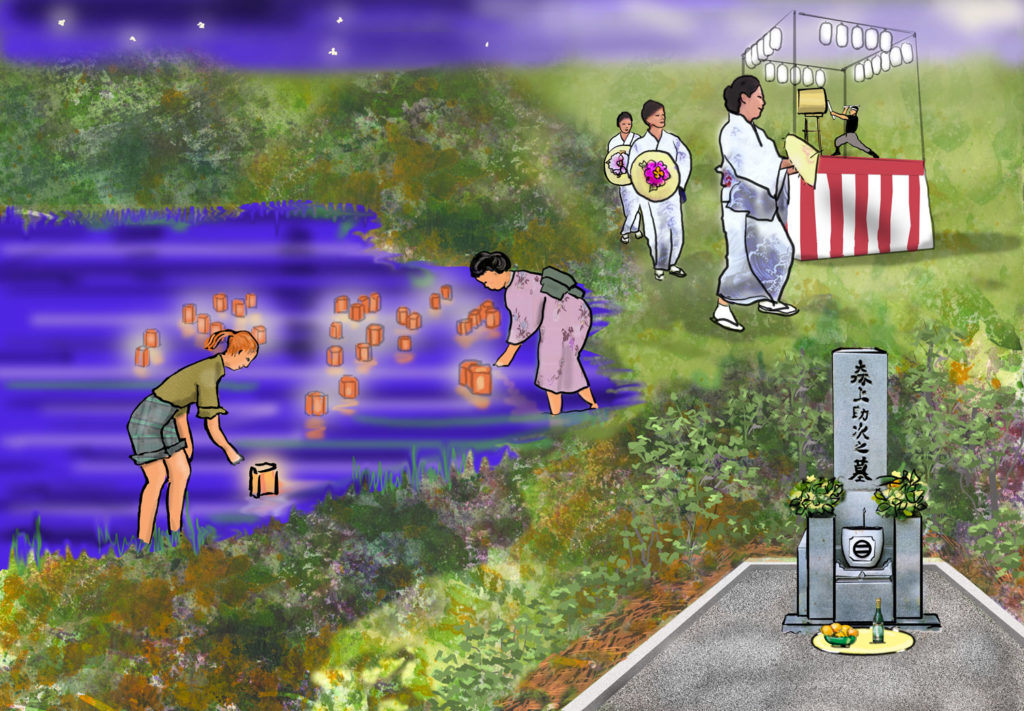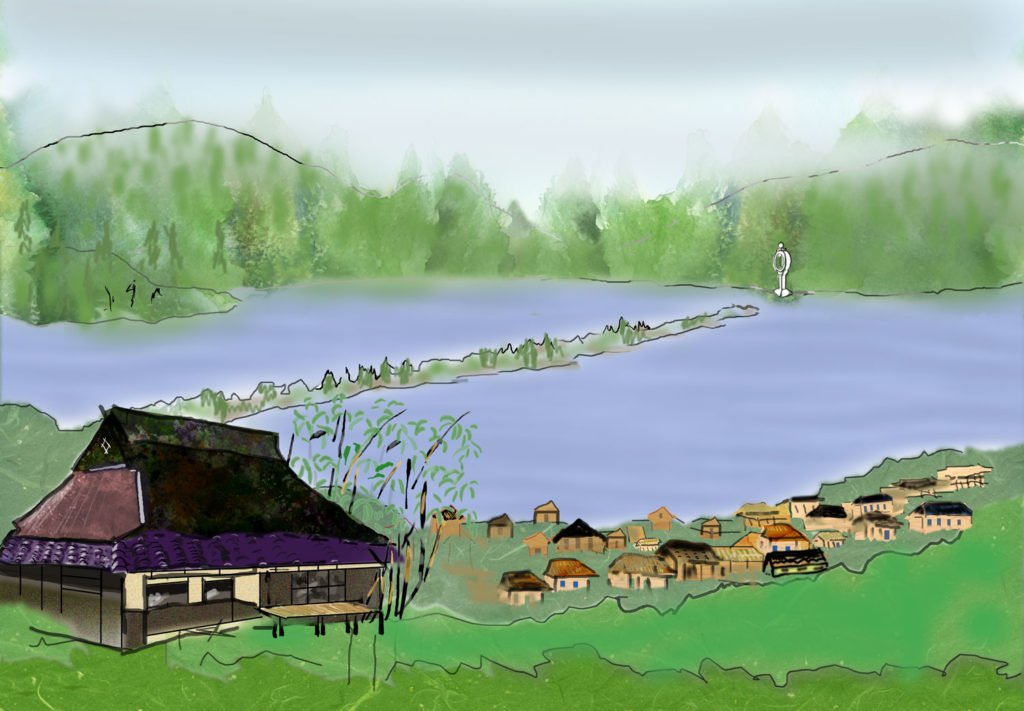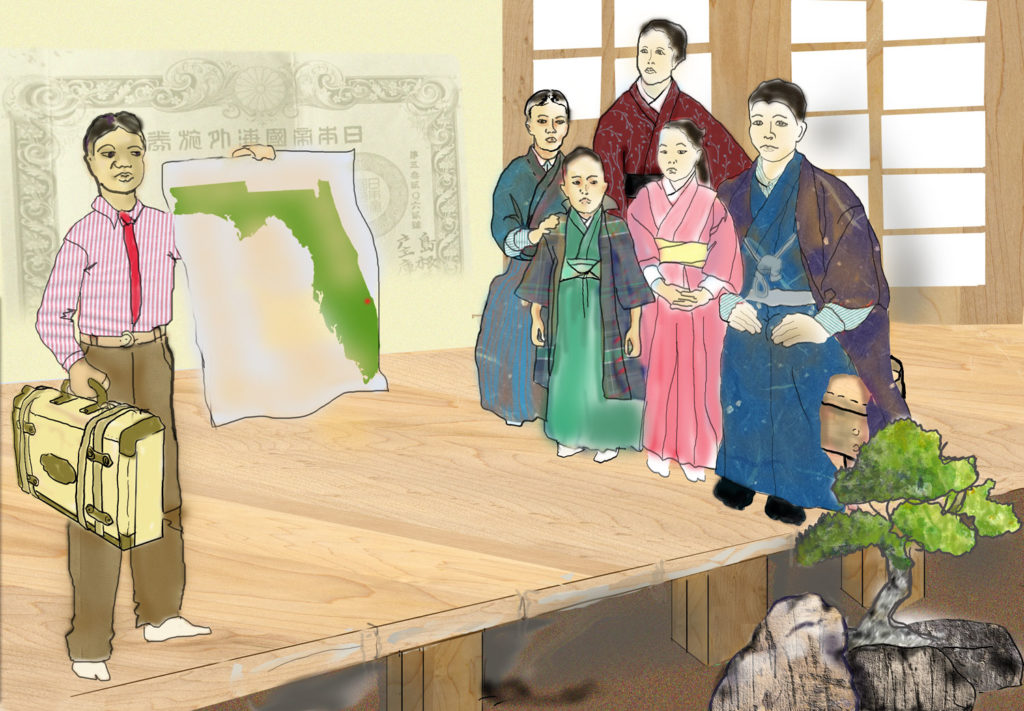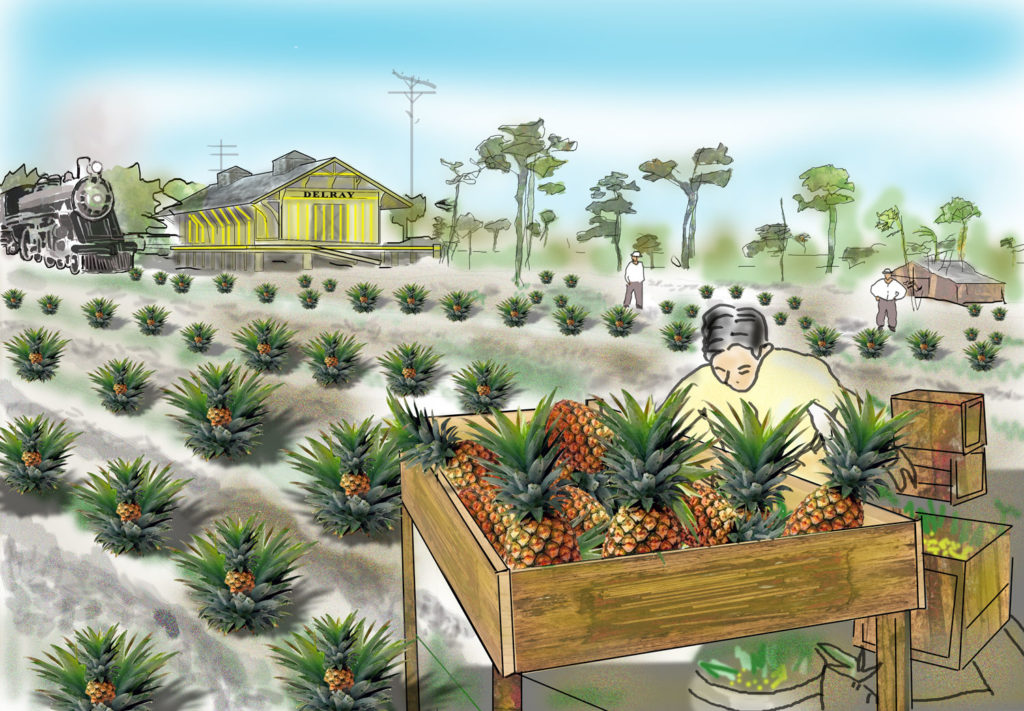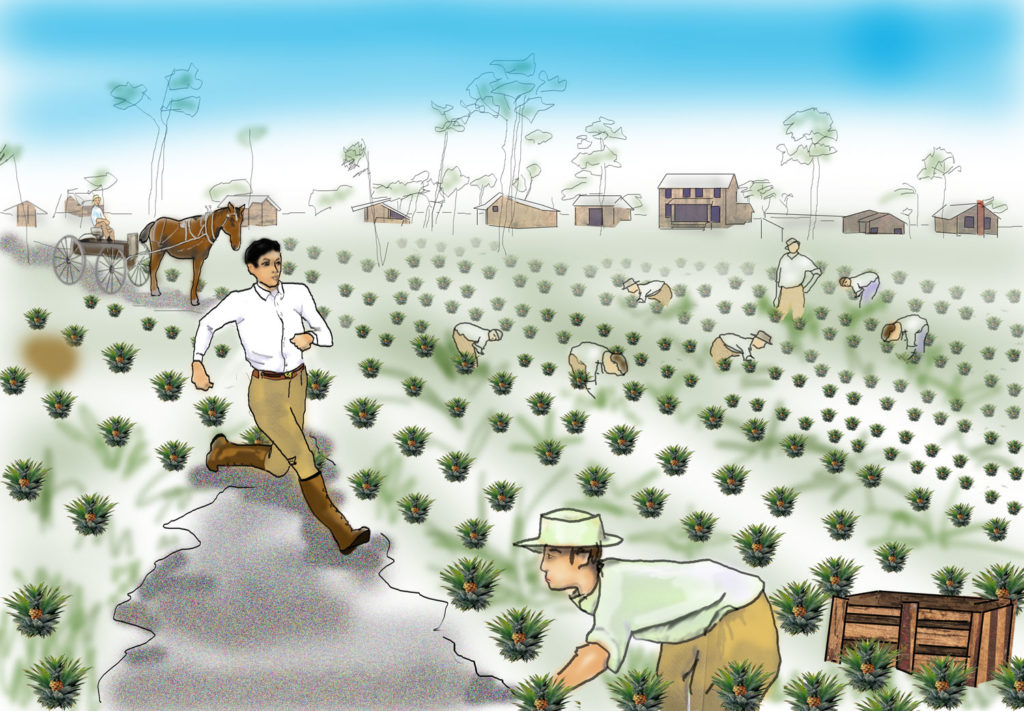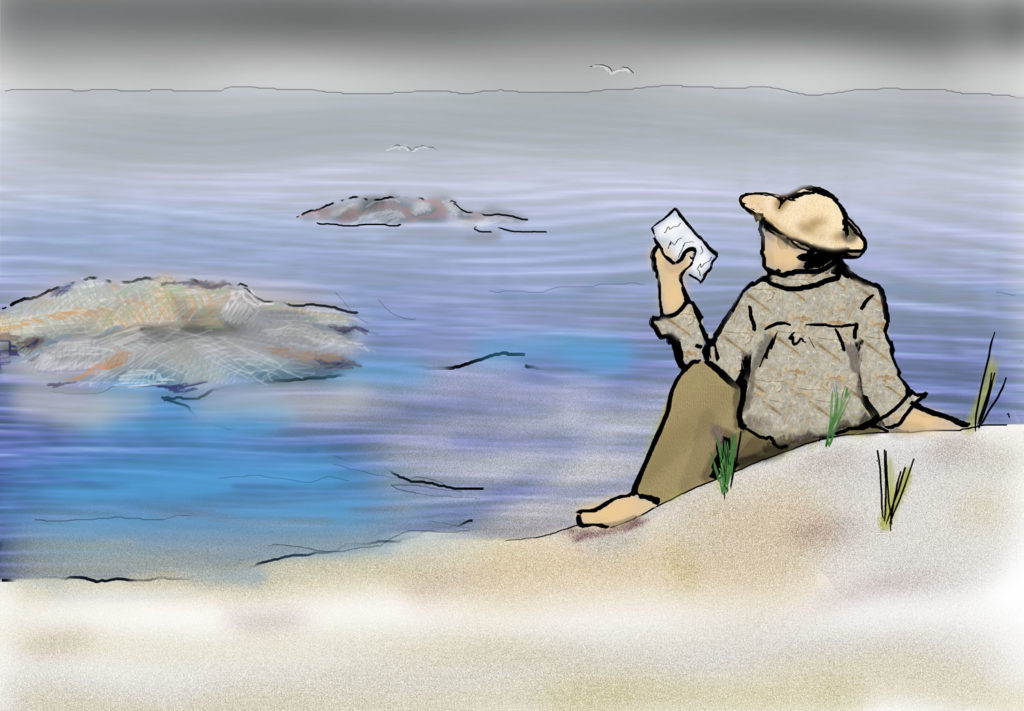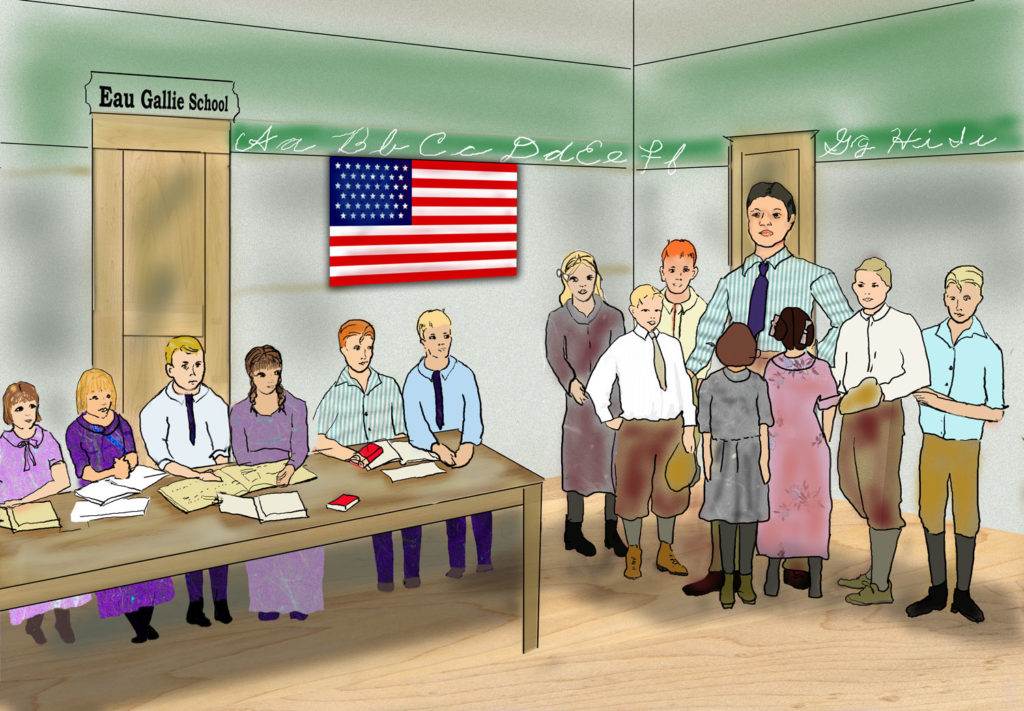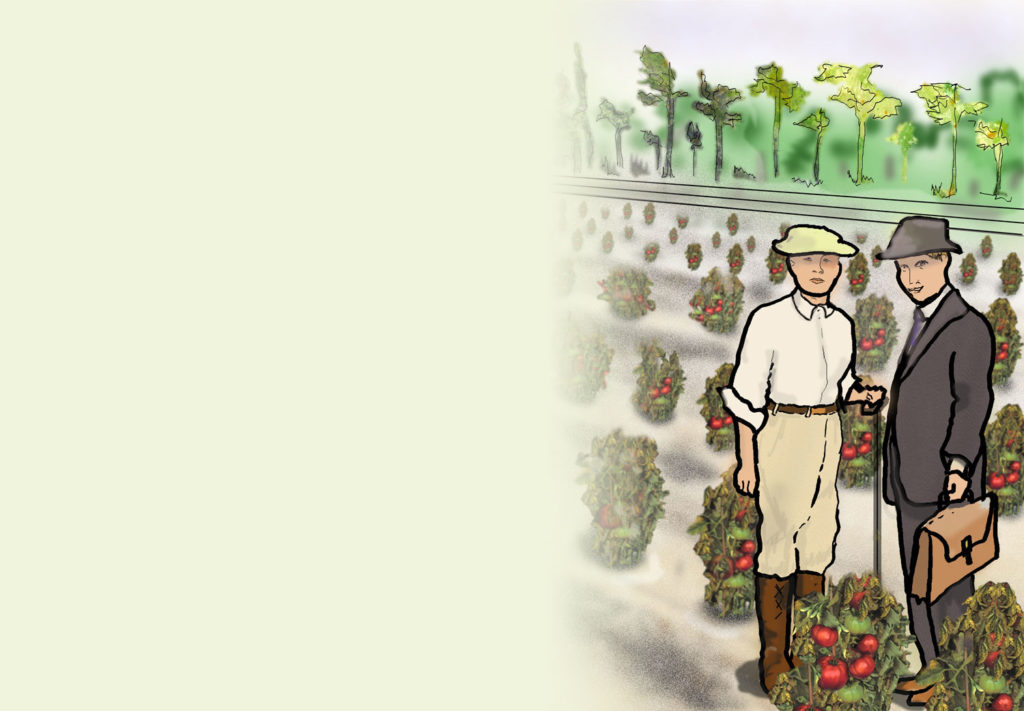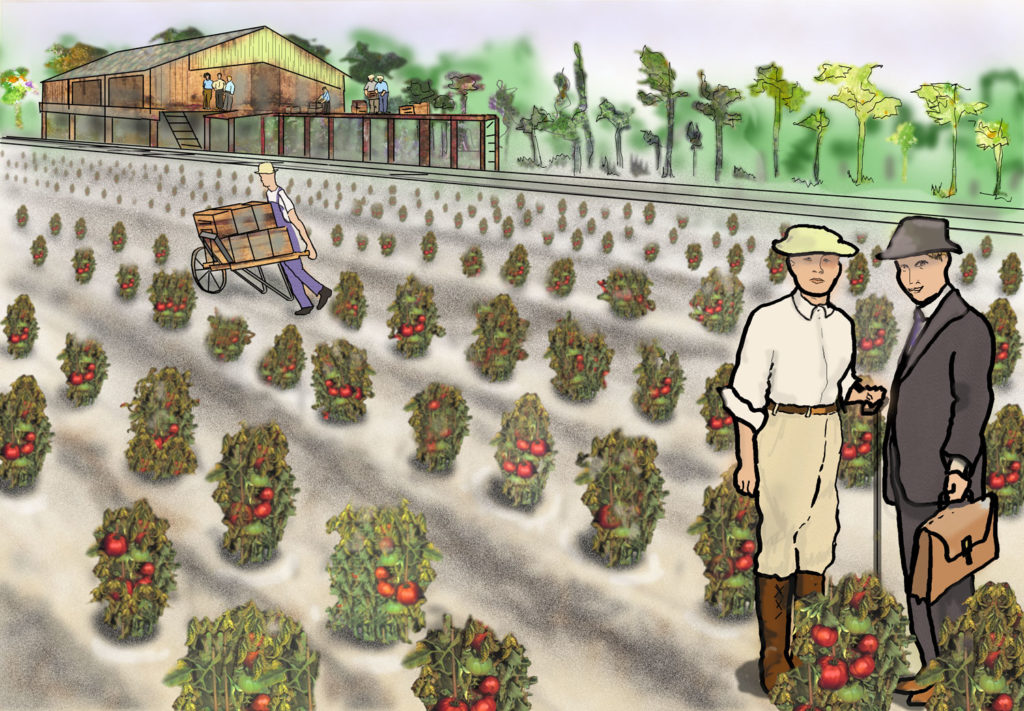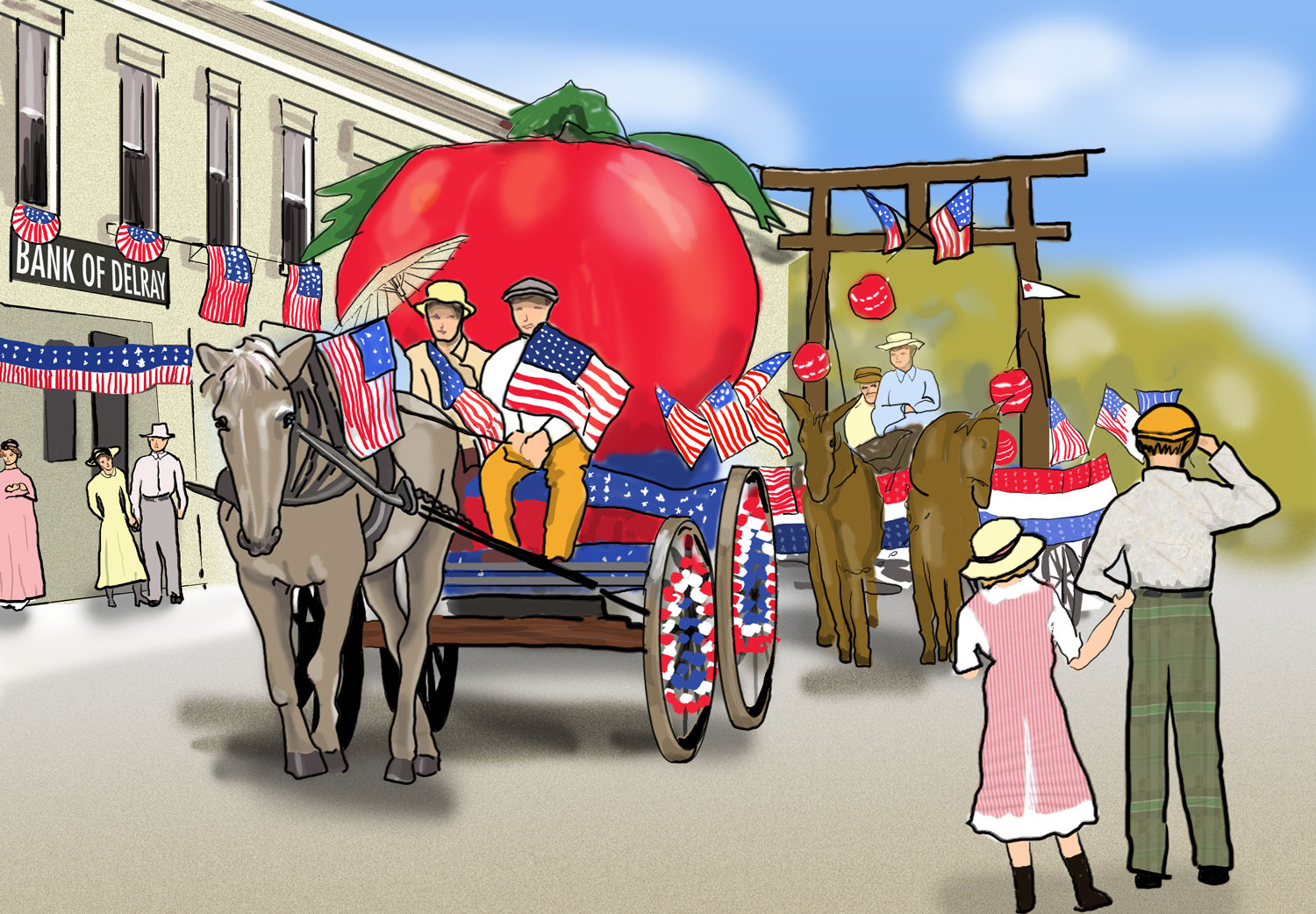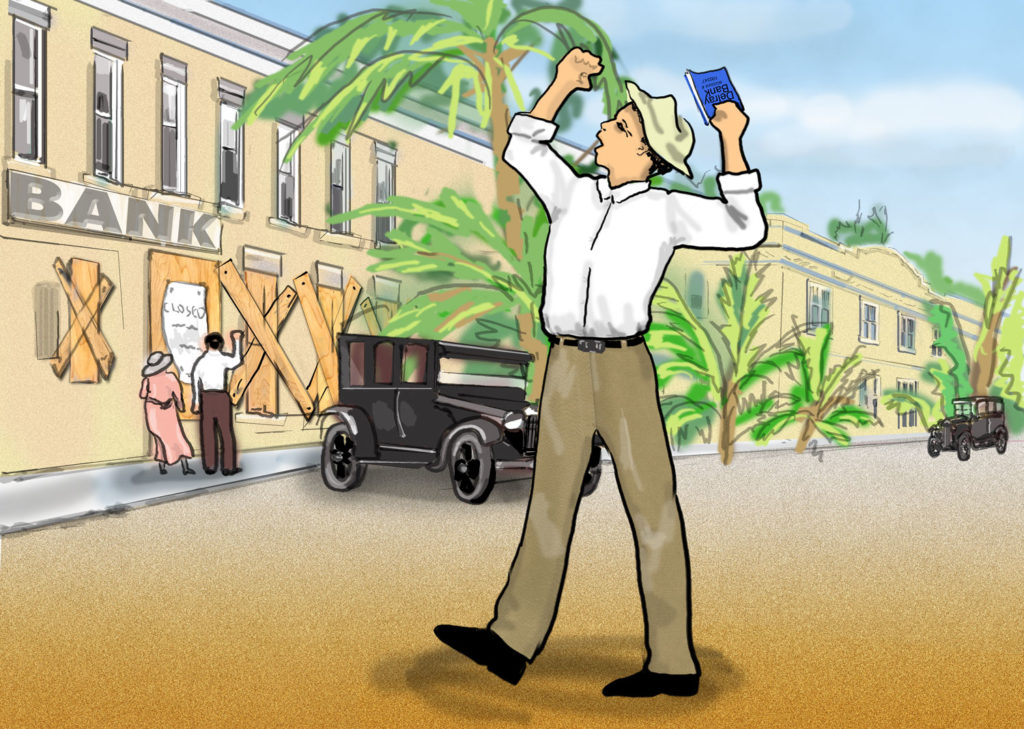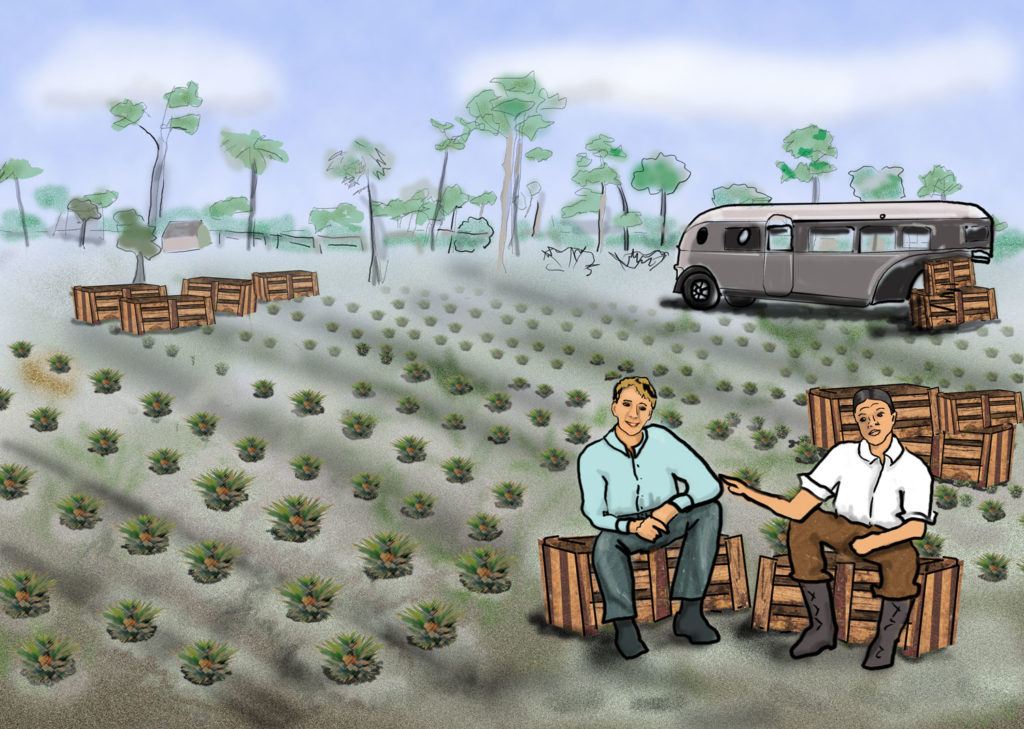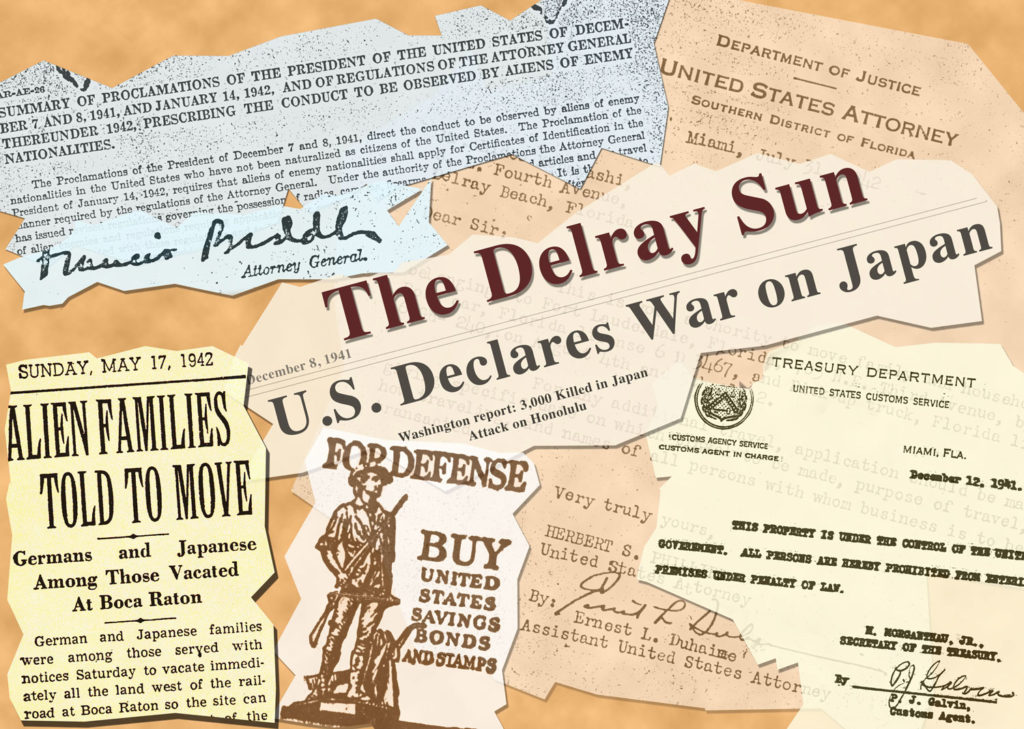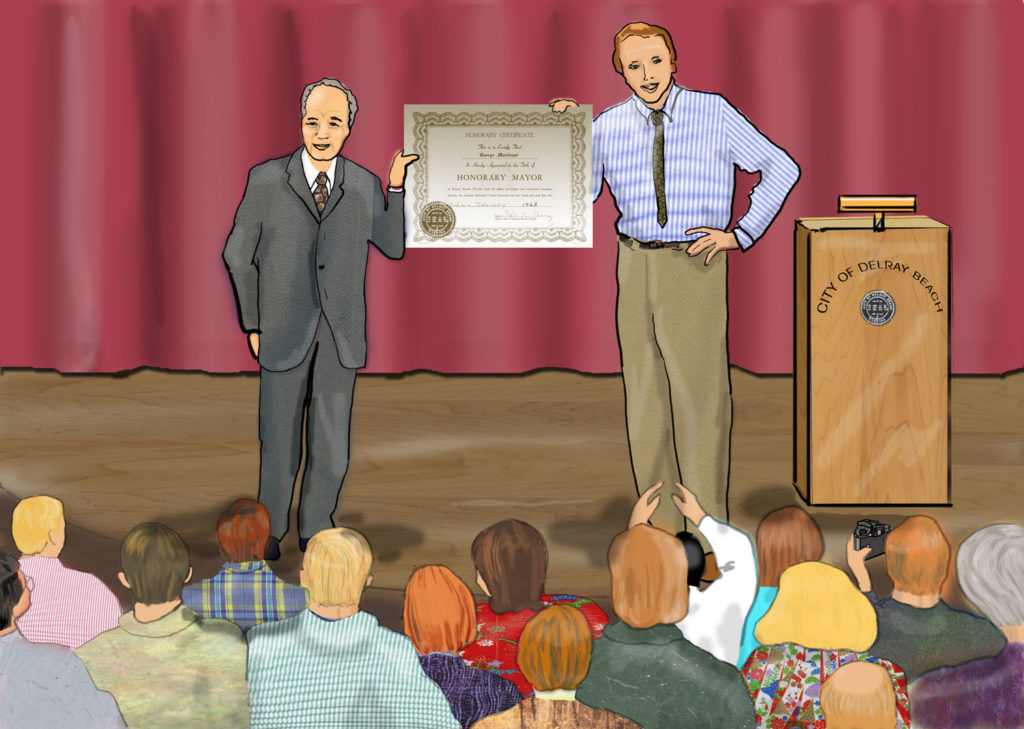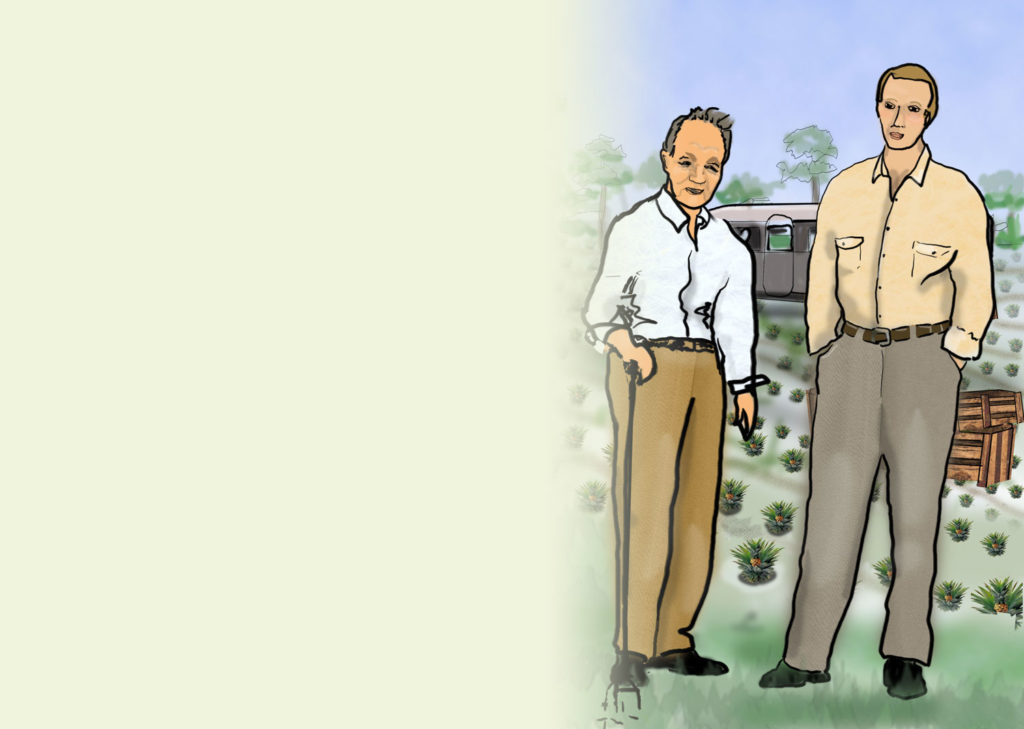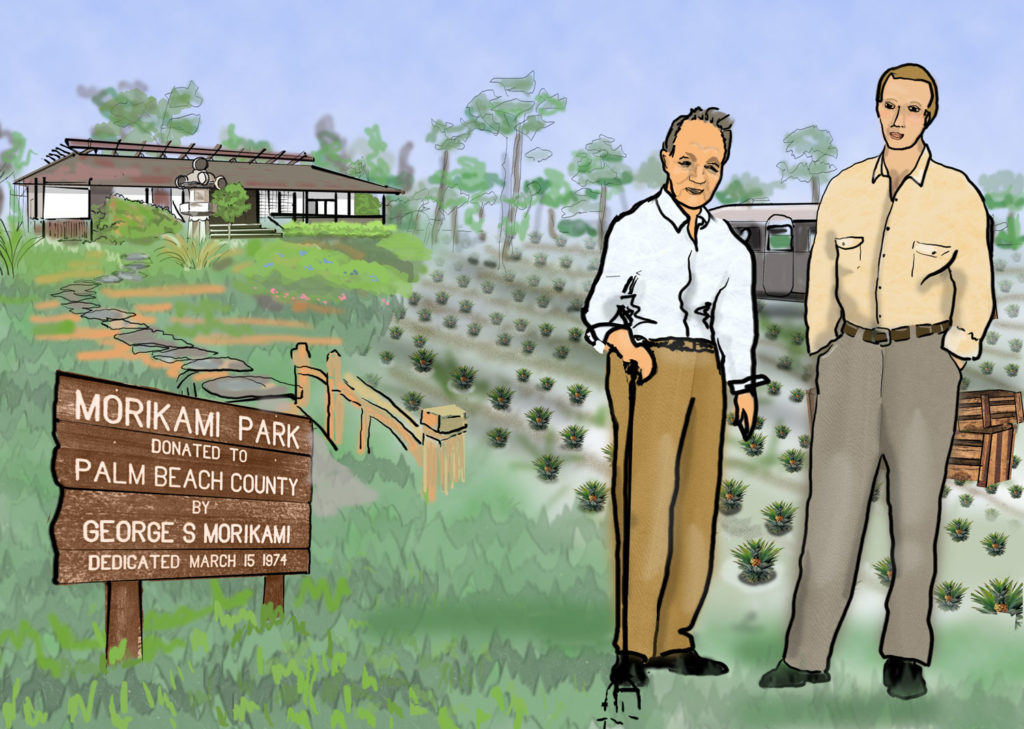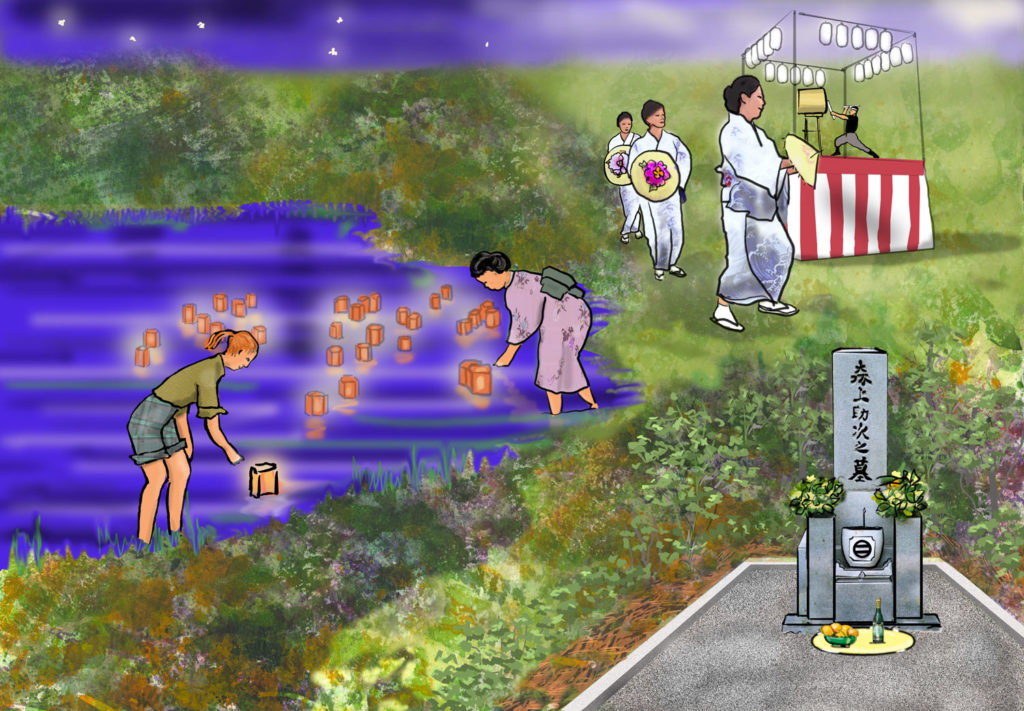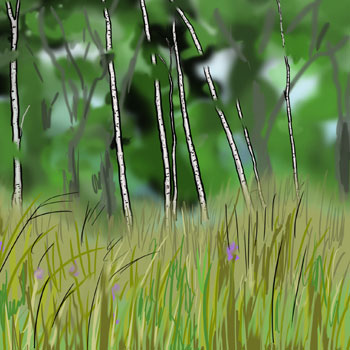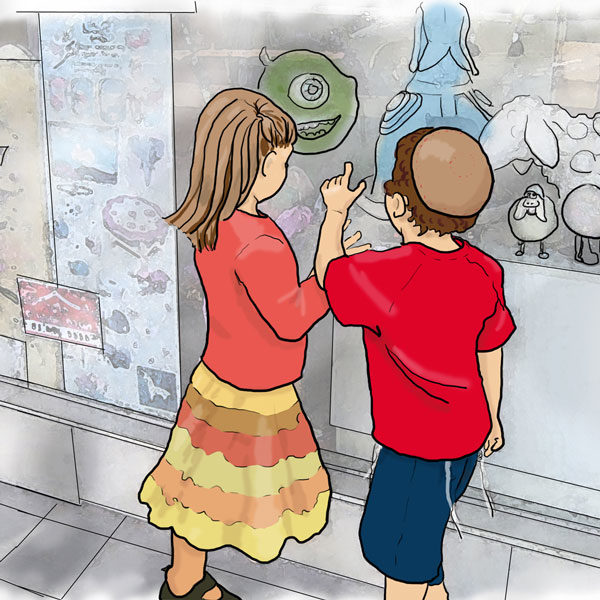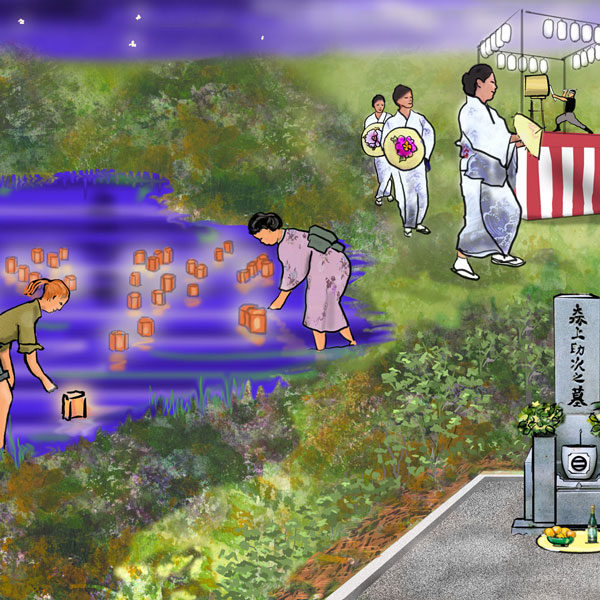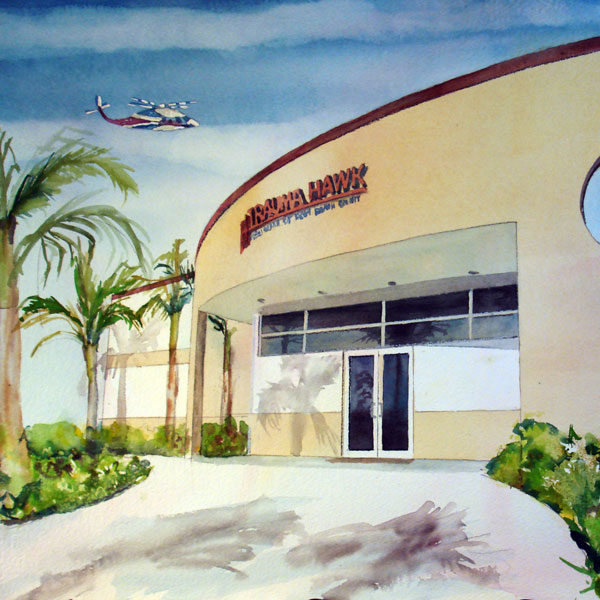Kamishibai Japanese Storytelling Cards
The illustrations to depict the life of George Morikami and were assembled into a traditional Japanese Kamishibai storytelling kit for education purposes. Cards depict a summer Bon Festival at the Morikami Museum, a Yamato Colony tomato float in a Delray Beach Fourth of July parade, an adult George learning English by attending elementary school, and George raising pineapple plants.
Click through the text and illustrations below to view the entire story.
Through the generosity of the MetLife Foundation and the Community Foundation of Palm Beach and Martin Counties 10.25″ x 15″ boxed sets of the kamishibai story cards, “George’s Journey” were distributed to public schools throughout Palm Beach County. Each boxed set included cultural components and discussion points for students.
The story was written by Beth Kawazura with the assistance of Sharon Friedheim, Reiko Nishioka, Larry Rosensweig and Tom Gregersen of The Morikami Museum and Japanese Gardens. Additional informational support given by the Delray Beach Historical Society.
Artwork by Caren Hackman © 2002

